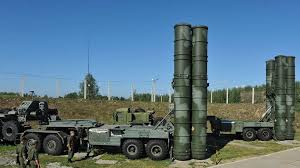India Pledges Technical Safeguards to US Over S-400 Data Security; Full Deployment Expected by 2026
In a bid to alleviate U.S. concerns over its acquisition of Russian S-400 missile defense systems, India has proposed technical measures to prevent the sharing of sensitive data on American-made military aircraft and helicopters with Russia. The offer, confirmed by sources in the Ministry of Defence on Saturday, August 9, 2025, comes as India prepares to operationalize all five S-400 regiments by early 2026, marking a significant milestone in its air defense capabilities. This development, aimed at balancing strategic partnerships with both Washington and Moscow, has sparked debates on India’s foreign policy amid escalating global tensions.
The proposal includes software modifications and operational protocols to ensure that the S-400’s radar and tracking systems do not transmit data on U.S.-origin platforms, such as the Apache AH-64E helicopters and C-130J Super Hercules aircraft, back to Russian servers. “India is committed to safeguarding sensitive information and has assured the U.S. of implementing robust technical barriers,” a senior defense official told The Times of India, speaking on condition of anonymity. The measures, developed in consultation with Indian and Russian experts, aim to address fears that the S-400 could collect and relay intelligence on U.S. technology, potentially compromising American interests.
The S-400 deal, signed in 2018 for $5.43 billion despite U.S. threats of sanctions under the Countering America’s Adversaries Through Sanctions Act (CAATSA), has been a point of friction in Indo-U.S. relations. The first regiment became operational in 2021, with deliveries continuing despite delays due to the Russia-Ukraine conflict. Russian Deputy Chief of Mission Roman Babushkin confirmed in June 2025 that the remaining units would be delivered by 2025-2026, aligning with India’s timeline for full deployment. The systems, capable of engaging targets up to 400 km away, are stationed at strategic locations, including Punjab and Rajasthan, to counter threats from Pakistan and China.
U.S. officials have expressed cautious optimism about India’s proposal. A State Department spokesperson told Reuters, “We welcome India’s efforts to mitigate risks associated with the S-400. Our dialogue continues to ensure interoperability and security in our defense partnership.” However, skepticism persists, with analysts like Dr. Sameer Patil from the Observer Research Foundation noting, “Technical assurances are a step forward, but verifying compliance remains challenging.” The U.S. has previously waived CAATSA sanctions for India, as seen in 2022, but concerns linger, especially after India’s refusal to join Western sanctions against Russia over Ukraine.
The timing of India’s offer coincides with broader geopolitical shifts, including a U.S.-Pakistan oil deal announced by President Donald Trump on July 30, 2025, and India’s imposition of 25% tariffs on U.S. goods in response to American trade barriers. Social media reactions on X were mixed, with @NaijaGist tweeting, “India’s S-400 tech fix for U.S. data concerns—smart diplomacy or necessary compromise? #IndiaUSRelations,” and @EagleEyeNG posting, “By 2026, all S-400 operational. India’s air defense gets a boost, but at what cost to U.S. ties?”
Critics in India, including opposition leader Rahul Gandhi, questioned the government’s handling, stating in Parliament, “Modi’s foreign policy flip-flops risk our sovereignty. Why bend to U.S. demands on Russian systems?” Defence Minister Rajnath Singh defended the move, saying, “India’s partnerships are balanced and in national interest.” The S-400’s deployment enhances India’s multi-layered air defense, complementing systems like the Akash and Barak-8, but interoperability with U.S. platforms remains a hurdle.
